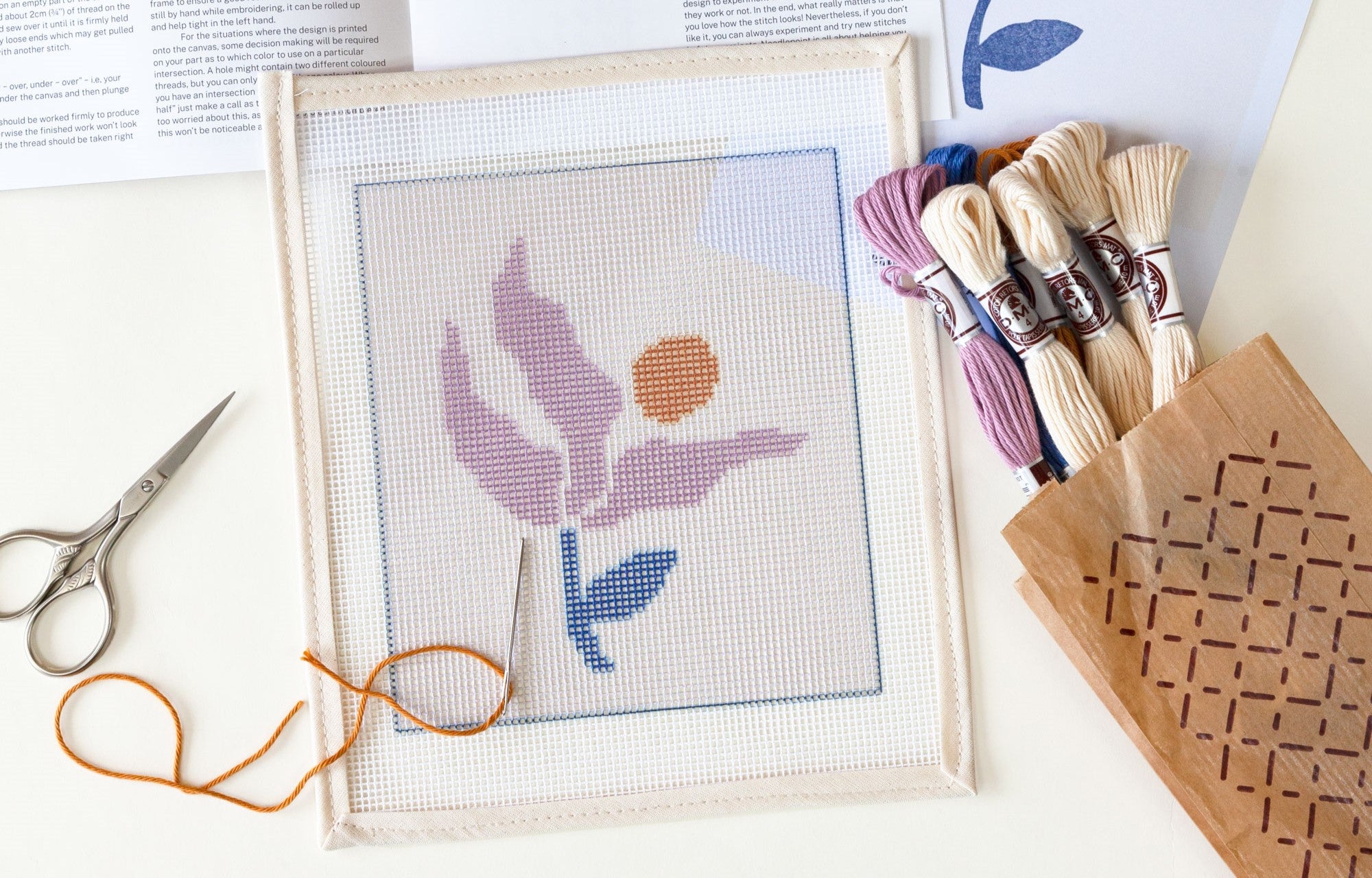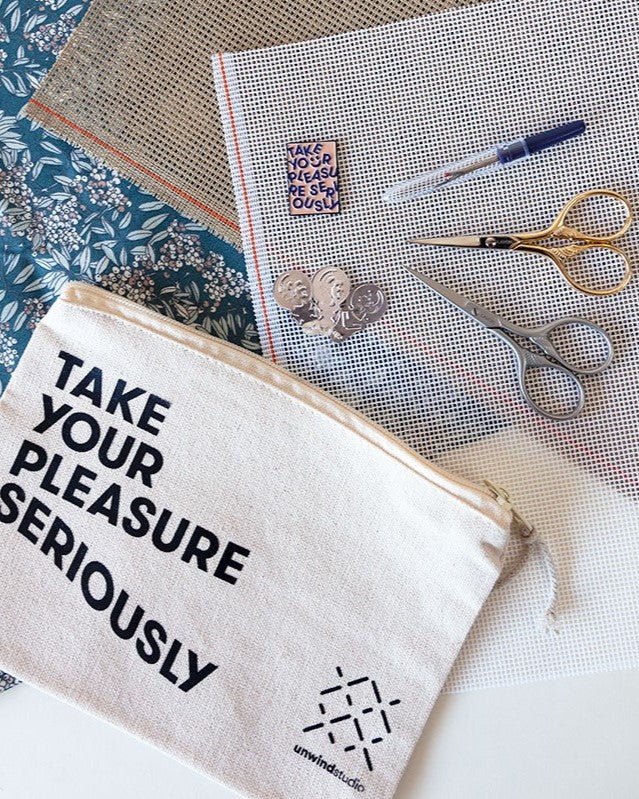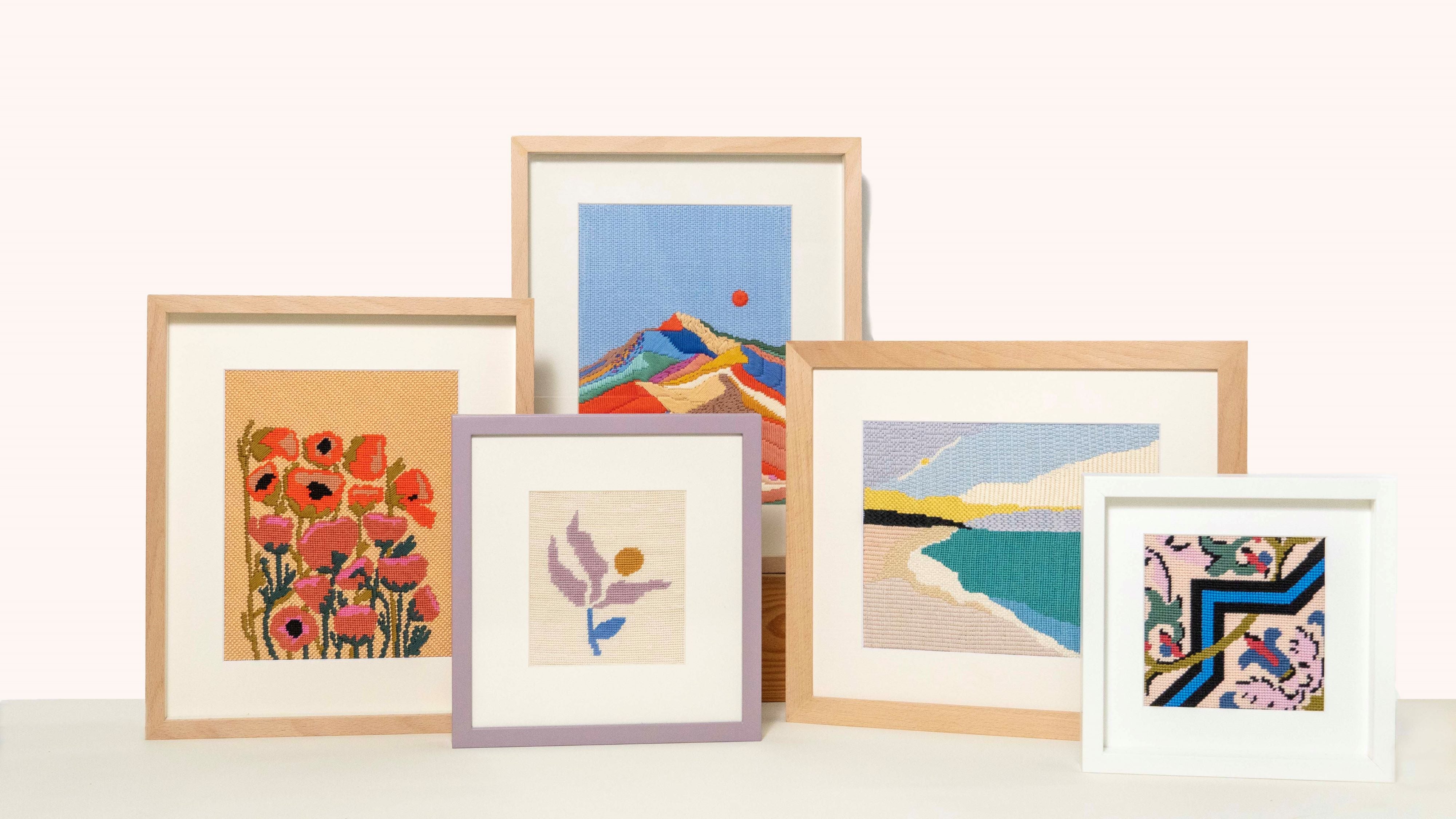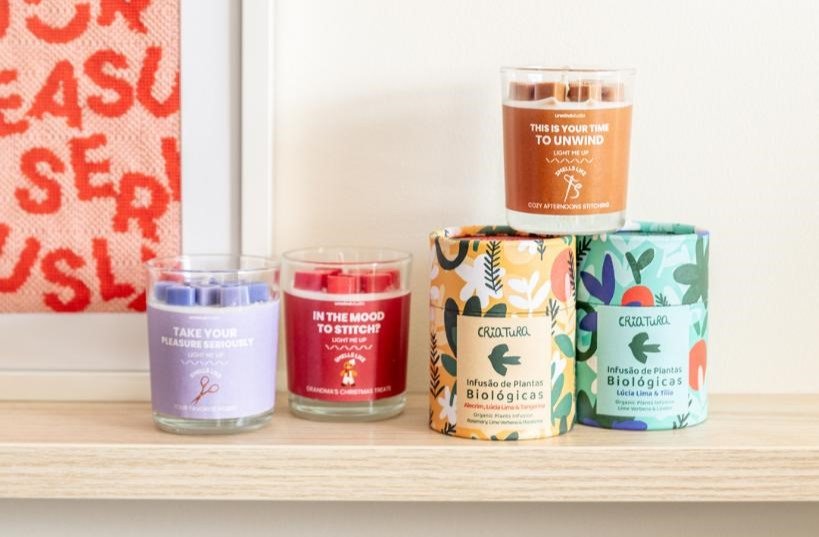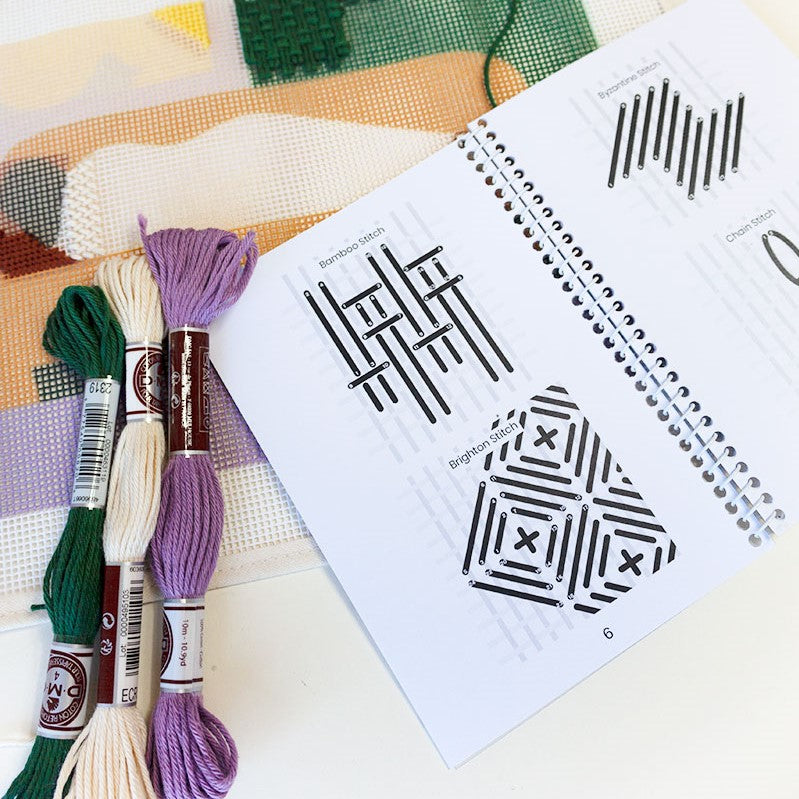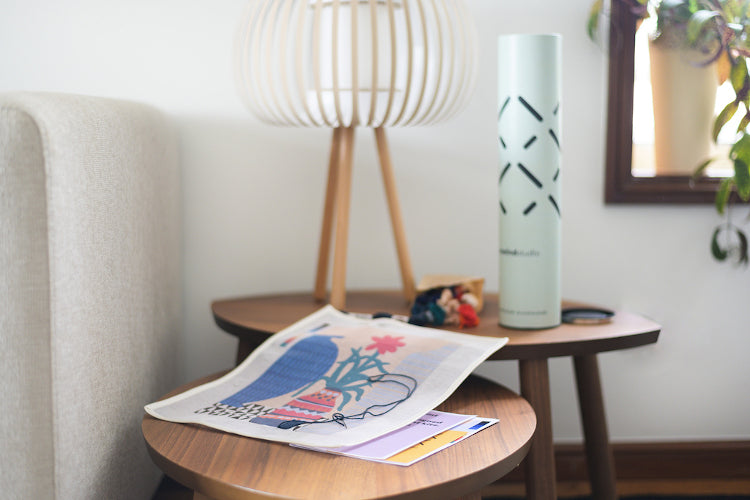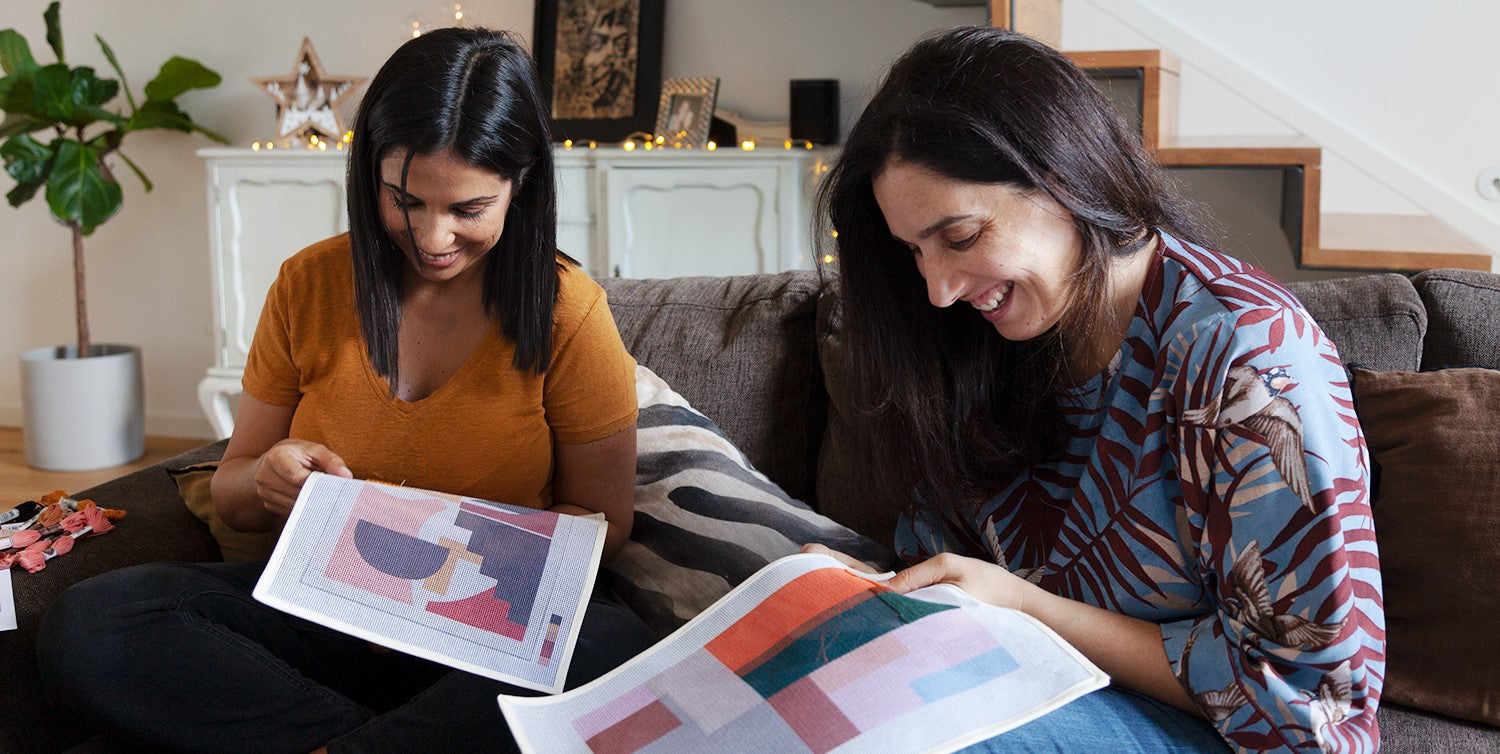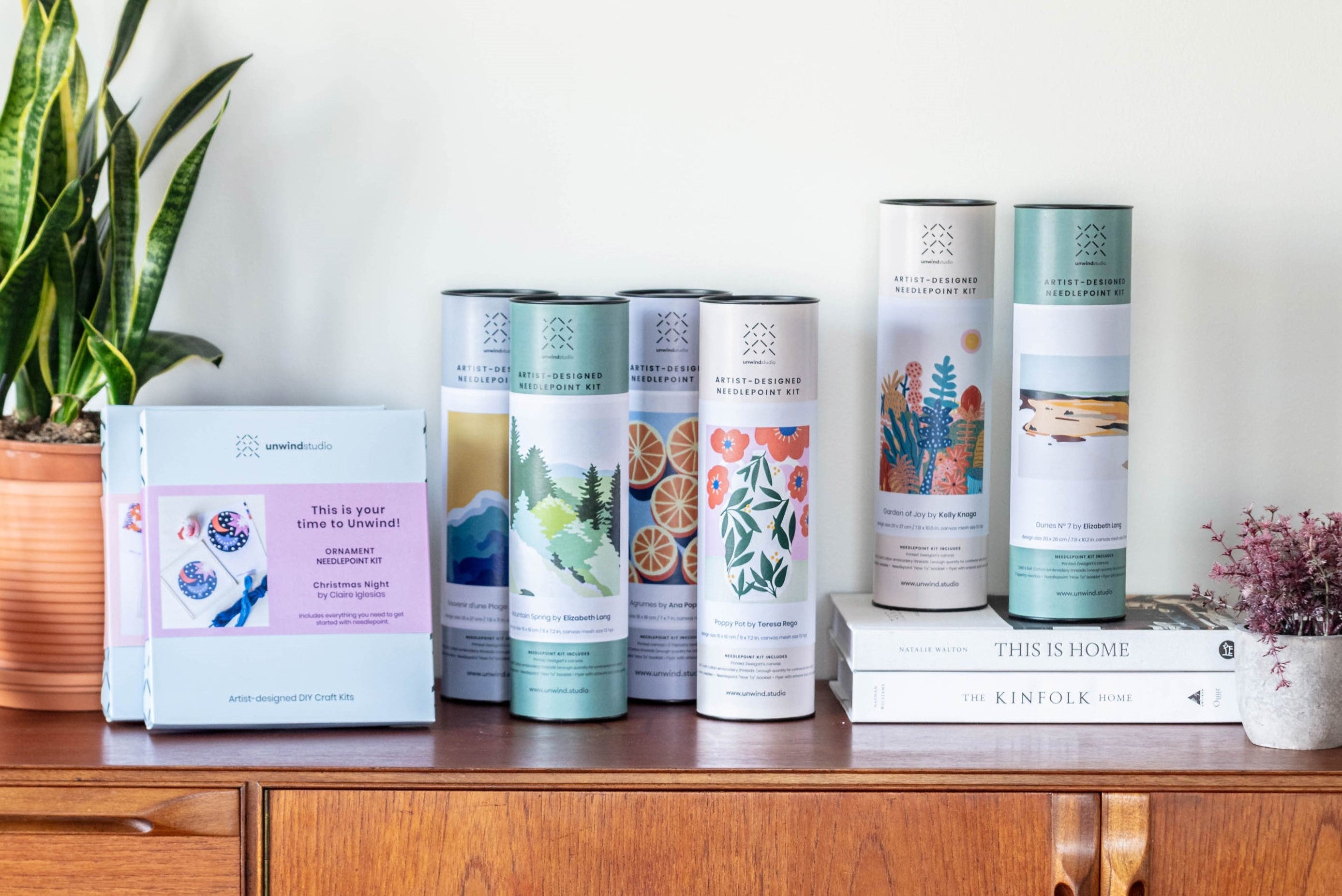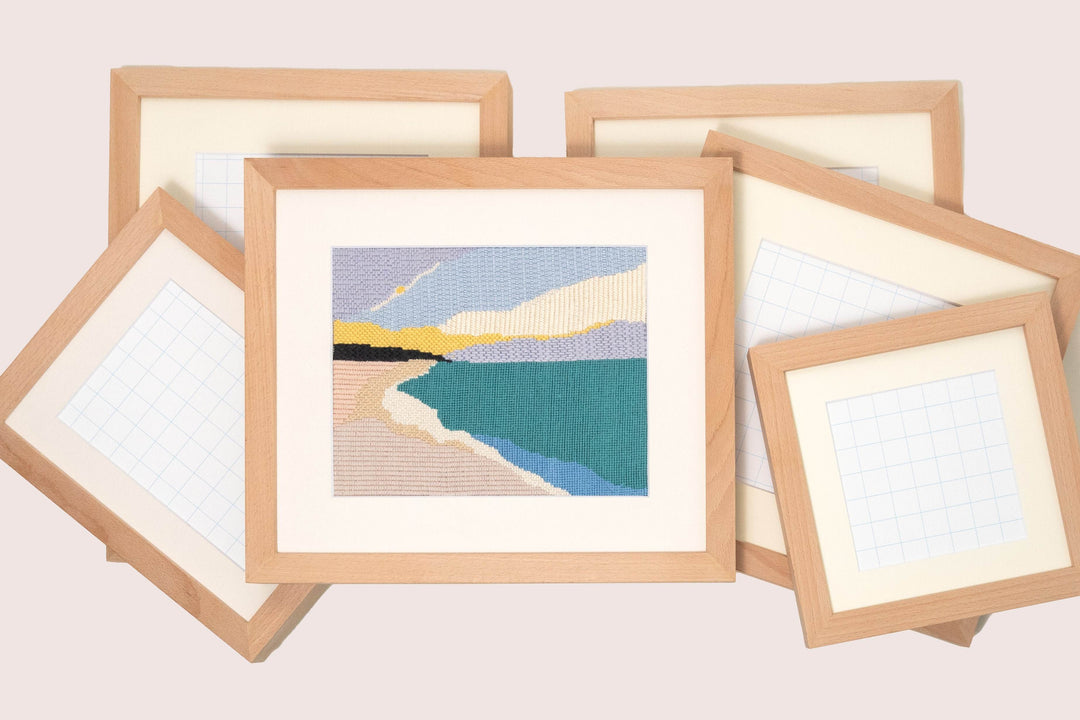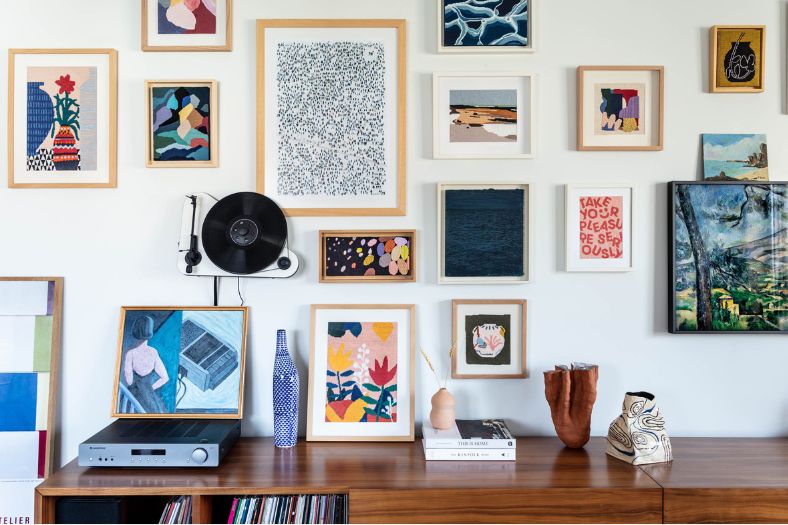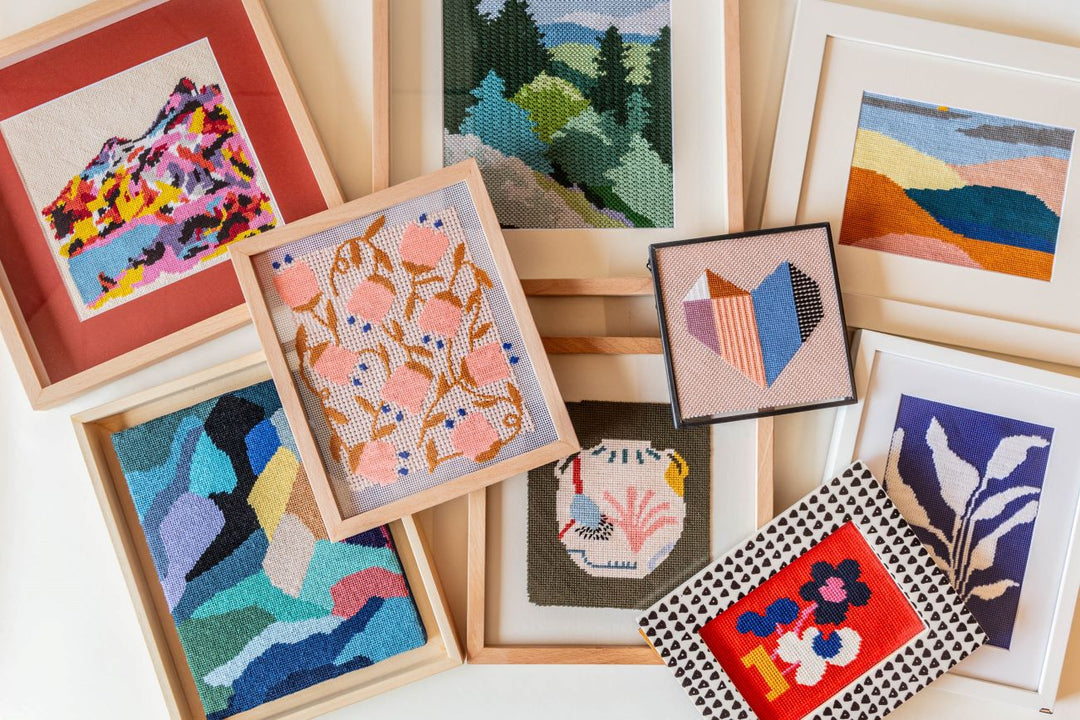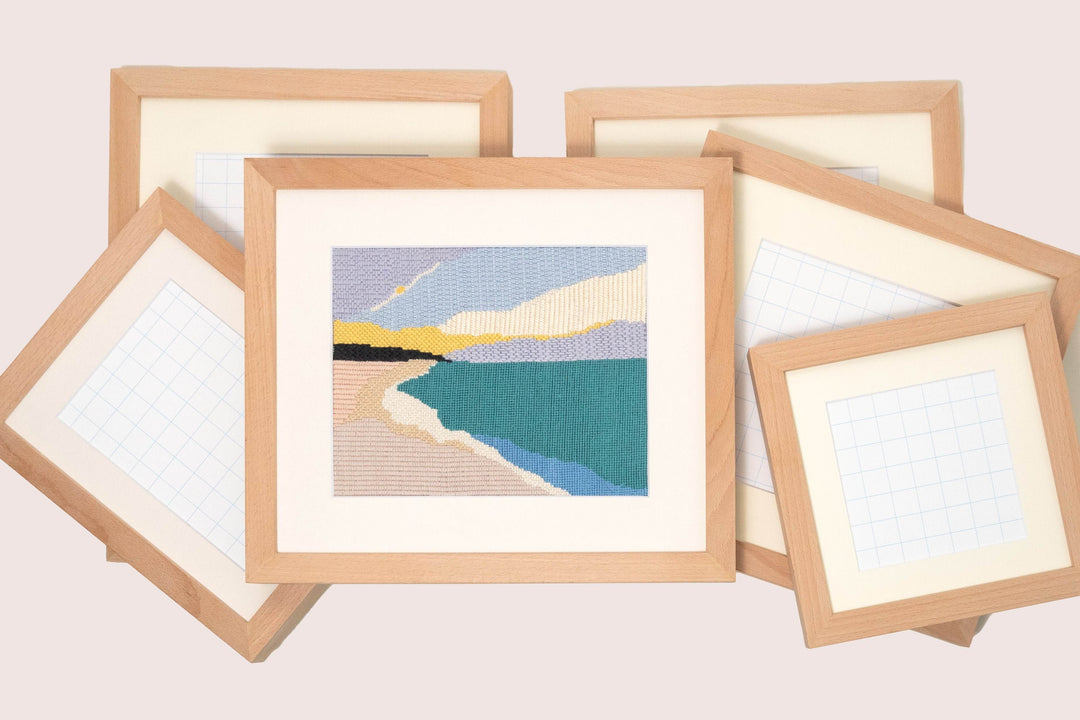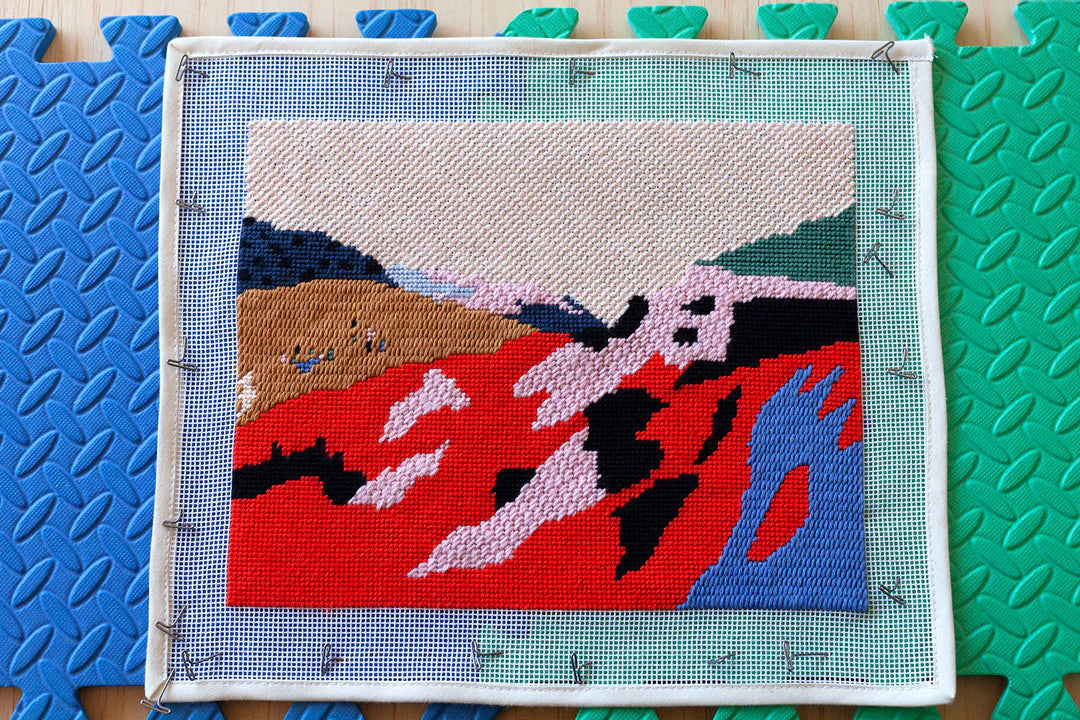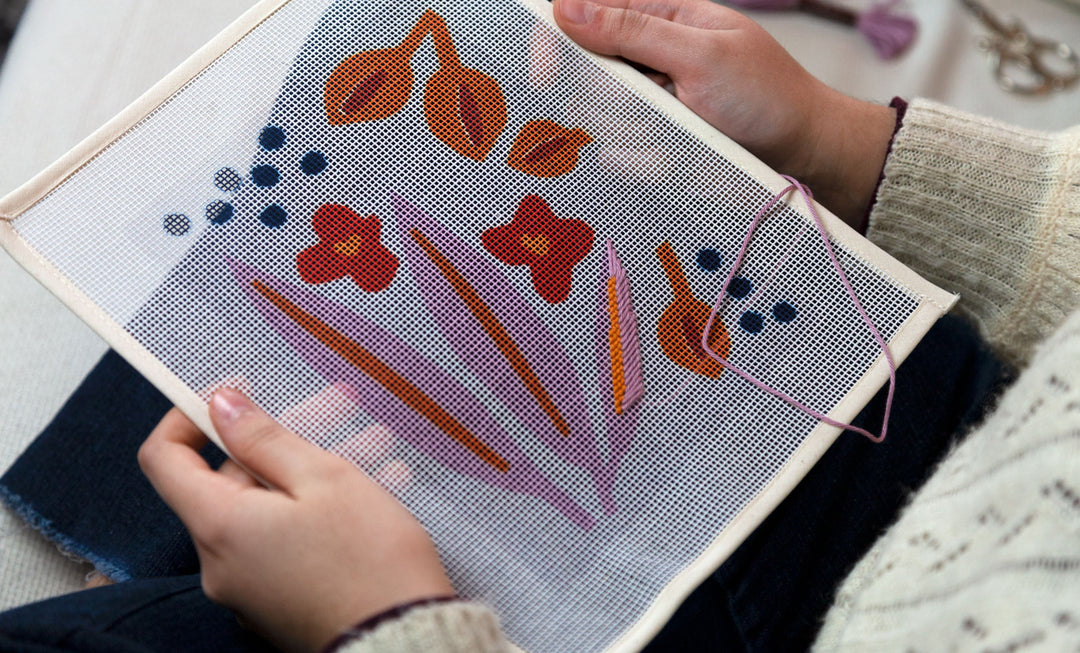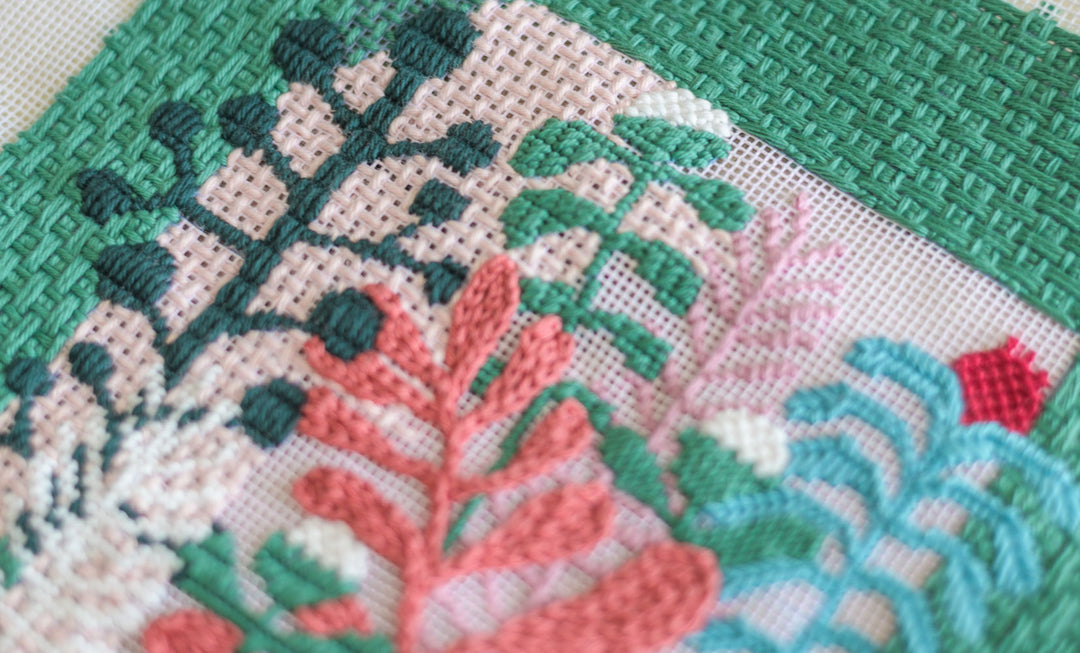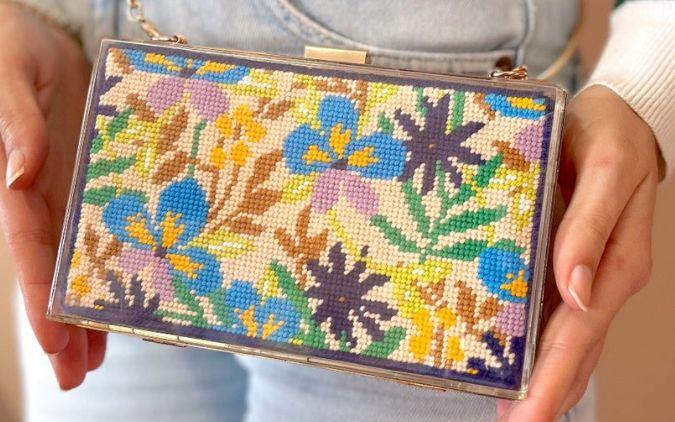How to professionally frame your needlepoint with Unwind Studio Frames: Video & How To
Framing your needlepoint artwork not only enhances its presentation but also preserves it for years to come. Using our Unwind Studio Frames, designed specifically for needlepoint (although you can use it for anything you want!), you can achieve a professional finish that showcases your hard work and intricate stitching.
In this detailed tutorial, we’ll guide you through each step of framing your needlepoint, ensuring it’s perfectly aligned and securely mounted.


A quick intro to our Needlepoint Frames
Made with the highest quality materials: solid wood moulding, acid-free matboard and self-adhesive foam board, at an affordable price when compared with custom framing solutions. All the details about our frames can be found here.
We also included a mounting kit in every frame purchased, with all the best tools to finalize your project (complete components listed below), considering the best methods used by the framing professionals.
For example, we avoid using MDF for the back, opting for the foam board + special framing tape solution, as this is the recommended method to keep your piece isolated from dust and moisture.
How to Frame your Needlepoint with Unwind Studio Frames: Video Tutorial:
Materials You'll Need:
- Unwind Studio Frame
- Stitched Needlepoint Canvas (or any artwork you wish to frame)
-
Mounting Kit (included with the frame):
- hanging hardware (you have two different types to choose from!)
- Special framing paper tape to seal & protect the back of the frame
- Silicone bumper pads to protect the wall and balance the frame
- Hemline pins to secure the canvas to the foam board
- Self-adhesive foam board (acid-free backing to keep artwork smooth and supported)
- Scissors
- X-Acto Knife
- Pencil
- Bowl with water
- Small sponge or cloth
- Hammer
- Ruler
Step-by-Step Instructions:
1. Prepare the Frame
Begin by carefully disassembling your Unwind Studio Frame. You’ll find the foam board, mat board, and the wooden frame itself.
2. Trim the Excess Canvas
If your stitched needlepoint canvas has extra fabric around the edges (cotton bias tape, for example, if you're using one of our canvases), use scissors to carefully cut it away. This will reduce bulk and ensure a clean, smooth finish inside the frame.
3. Align the Canvas
Place the mat board on top of the foam board (with the grid side of the foam board facing up). Using a pencil, mark small dots at each internal corner of the mat board—this will serve as a guide for centering your needlepoint. Remove the mat board and position your stitched canvas on the foam board, aligning the corners of your canvas with the dots you just marked.
4. Secure the Canvas
Once the canvas is properly aligned, use the metal pins provided in the mounting kit to secure it to the foam board. Start by pinning the four corners, making sure the canvas remains taut and even. Then, add additional pins along the sides to ensure it’s fully secured.
Tip: Use the flat side of your scissors to press the pins into the foam board—this can prevent sore fingers from applying too much pressure.
5. Layer the Boards and Frame
After securing the canvas, place the mat board back on top of the foam board. This mat will not only protect your artwork but also add a polished border. Now, slide both the foam board (with the canvas) and the mat board into the frame, ensuring everything fits snugly. Before closing the back, check to ensure no excess canvas is visible around the edges.
6. Seal the Back of the Frame
This next step is crucial for giving your needlepoint a clean, finished look and protecting it from dust, moisture, and other potential damage. Measure the length of each side of your frame and cut the provided sealing tape to size. Lightly moisten a sponge or cloth with water and dampen the shiny side of the tape. This activates the adhesive. Attach the tape along the back edges of the frame, ensuring it’s flush with the wood. Use an X-Acto knife to make small cuts at the corners, allowing you to fold the tape inwards for a neat finish. Repeat this for all four sides, overlapping at the corners.
7. Attach the Hanging Hardware
With the framing complete, it’s time to attach the hardware for hanging. Consider the orientation of your canvas—whether it’s landscape or portrait—before selecting the top side for your hanger. Use a ruler to find the center point along the top edge of the frame. Place the hanger here - if you choose the smaller one, the triangle should always be pointing down, so that it remains "invisible" on the wall when you hang it - and secure it with the small nails provided in the mounting kit. A hammer will help you gently tap the nails into place, ensuring the hanger is firmly attached - use it carefully.
8. Add Silicone Bumpers
To protect the back of your framed piece from scratching the wall or sitting unevenly, apply small silicone bumpers (available in the mounting kit). These transparent, adhesive dots can be attached to the four corners of the back of your frame. Simply peel off the backing and press each bumper in place. This will ensure the frame hangs evenly and reduces any impact against the wall.
FINAL RESULT OF THE BACK OF THE FRAME:

Conclusion:
Congratulations! You’ve successfully framed your needlepoint using an Unwind Studio Frame, giving your artwork a professional presentation while protecting it for the long term. By following these steps, your needlepoint is now ready to hang, bringing a touch of creativity and craftsmanship to your walls.
Framing your own work not only adds a personal touch but also allows you to control every detail of how your needlepoint is displayed. With the Unwind Studio Frames, you have everything you need for a polished, gallery-worthy finish. Enjoy the satisfaction of showcasing your art, knowing you’ve done it all yourself!
Happy Framing!


